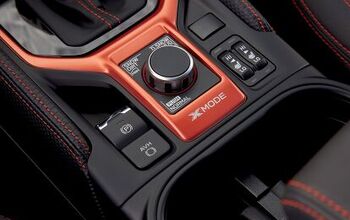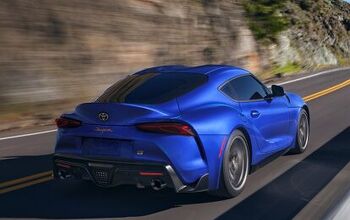McLaren F1 Successor to Borrow MP4-12C Engine, Add KERS

When the McLaren MP4-12C debuted, it was seen as a disappointment by many. Certainly the car’s performance was amazing, but not the Bugatti-beating numbers some had expected. That’s because it was never built as a Veyron rival but rather a Ferrari 458 killer. A proper successor to the McLaren F1 would come, however, and according to a new report by CAR Magazine, it will launch some time this year.
Powering the car, code named the P12, will be an up-rated version of the twin-turbo 3.8-liter V8 used in the MP4-12C, with one important change – KERS. Yes, the newest McLAren machine will utilize a kinetic energy recovery system, generating power under baking and then making that energy available in the form of electric boost on demand.
As for the chassis, it will reportedly be a similar structure to the MP4-12C as well, but with an even higher use of carbon for minimum weight.
Styling for the vehicle is said to be vastly more dramatic than the 12C (we certainly hope so), but with a conventional side-by-side cockpit, rather than a three-seat layout like the F1.
Pricing is said to be around $1.2 million.
[Source: CAR]

With AutoGuide from its launch, Colum previously acted as Editor-in-Chief of Modified Luxury & Exotics magazine where he became a certifiable car snob driving supercars like the Koenigsegg CCX and racing down the autobahn in anything over 500 hp. He has won numerous automotive journalism awards including the Best Video Journalism Award in 2014 and 2015 from the Automotive Journalists Association of Canada (AJAC). Colum founded Geared Content Studios, VerticalScope's in-house branded content division and works to find ways to integrate brands organically into content.
More by Colum Wood
































Comments
Join the conversation
PRESS RELEASE January 3, 2012 Reference: US Patent 7,931,107 B2 VEHICLE KINETIC ENERGY UTILIZATION TRANSMISSION SYSTEM. This recent patent enables the reduction of fuel consumption in motor vehicles by the storage of kinetic energy for reuse. This technology incorporates an infinitely variable transmission (IVT) in the form of an eddy current induction device (called a Modulator) coupled to a gear system to conquer the torque flow management problem caused by infinitely varying bi-directional energy flow between a moving vehicle mass and an associated rotating flywheel mass created by the fact that the respective mass velocities move in an inverse acceleration relationship. To illustrate this phenomenon, observe that as kinetic energy passes from the moving vehicle to, and is captured by, the flywheel it is caused to accelerate, however the vehicle is consequently caused to slow; but to function efficiently, the flywheel requires an ever increasing input-speed factor from a source which is ever slowing. This always changing speed dichotomy can only be effectively managed by an infinitely variable transmission, and, other than that offered by the above patent, none have been successful for the subject purpose. The technology reflected in this patent involves very few parts, and is therefore economical to manufacture. It is in addition, long lived, requires little maintenance, and is very durable. Importantly, this system is suitable not only for passenger car use, but also for delivery vans, trucks, and buses. The conservation of kinetic energy through the use of battery energy-storage technology is exceedingly inefficient while such a mechanical approach is well known to be very high in efficiency. As may be realized, existing battery hybrid technology was developed because it was a way around this, now solved, torque-management problem. As these complicated and costly battery-related electric energy arrangements only avoid, and do not solve this problem, the penalty for this has been the great loss of efficiency as compared to a mechanical storage system such as that proposed by the subject patent. Thank you, South Essex Engineering